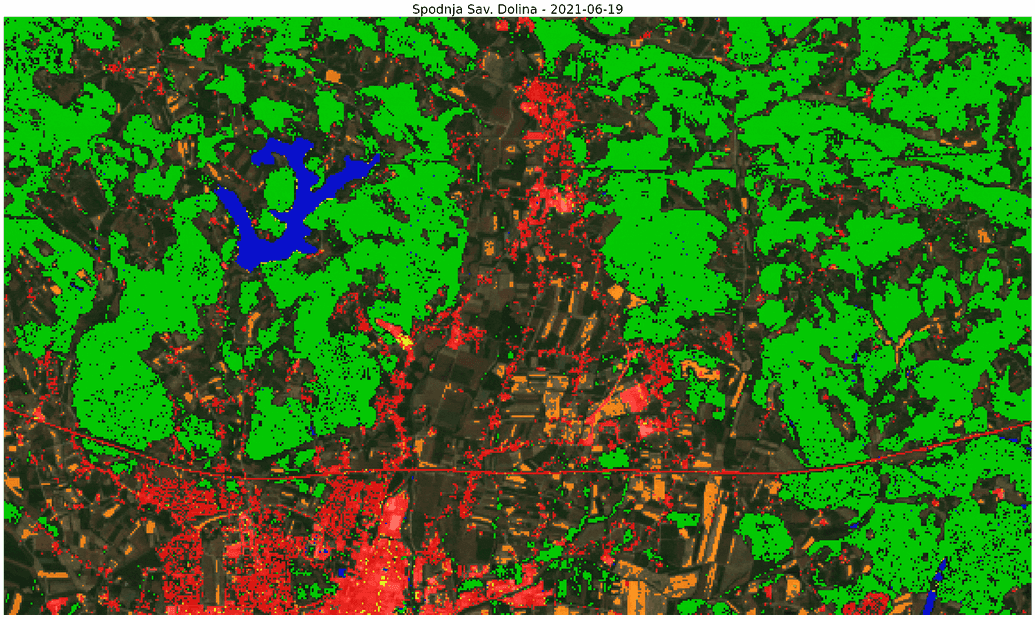Binary Land-Cover Marker
Basic info
Binary land-cover marker is a set of binary land-cover classifiers that are able to give insights into the land-cover of each pixel of a FOI. These are: built-up, bare-soil, forest and water land-cover binary classifiers. The combination of these binary land-cover classifiers gives us our own proprietary on-demand scene classification map that can be applied to any single Sentinel-2 observation.
Marker output
Scene classification example can be found in the image below for a medium-sized area in Savinjska valley, Slovenia.
The color coding of pixels is as follows:
- red color - identified as likely built-up / artificial structure,
- orange color - identified as likely bare-soil,
- green color - identified as likely forest / trees,
- blue color - identified as likely water.
Further info
If the reader is interested in more detail how such a binary land-cover classifier is trained, we refer him to our Medium blog-post on this topic - Area Monitoring: How to train a binary classifier for built-up areas. This blog-post focuses on training and evaluating the built-up binary land-cover classifier, however the procedures and findings therein can be translated to other classifiers also.
All of these pixel-wise predictions are available also in the Browser-App to help understand the land-cover of specific FOIs. You can view them by choosing them in the drop-down just above the image chips:
As an example, here the layer based on the forest classifier probability is shown. You can also chose the layer in the same way in the Timelapse window in the bottom left.
The outputs of these models are also available in the produced signal datasets we use to calculate other markers and can be used to find FOIs where we suspect that the claimed and actual land-covers differ substantially. An option, although not the only one, is to calculate the temporal average of one of these signals for a multi-month period. FOIs with even small portions of built-up pixels can stand-out in this approach, since they have a higher average than FOIs without built-up pixels.

